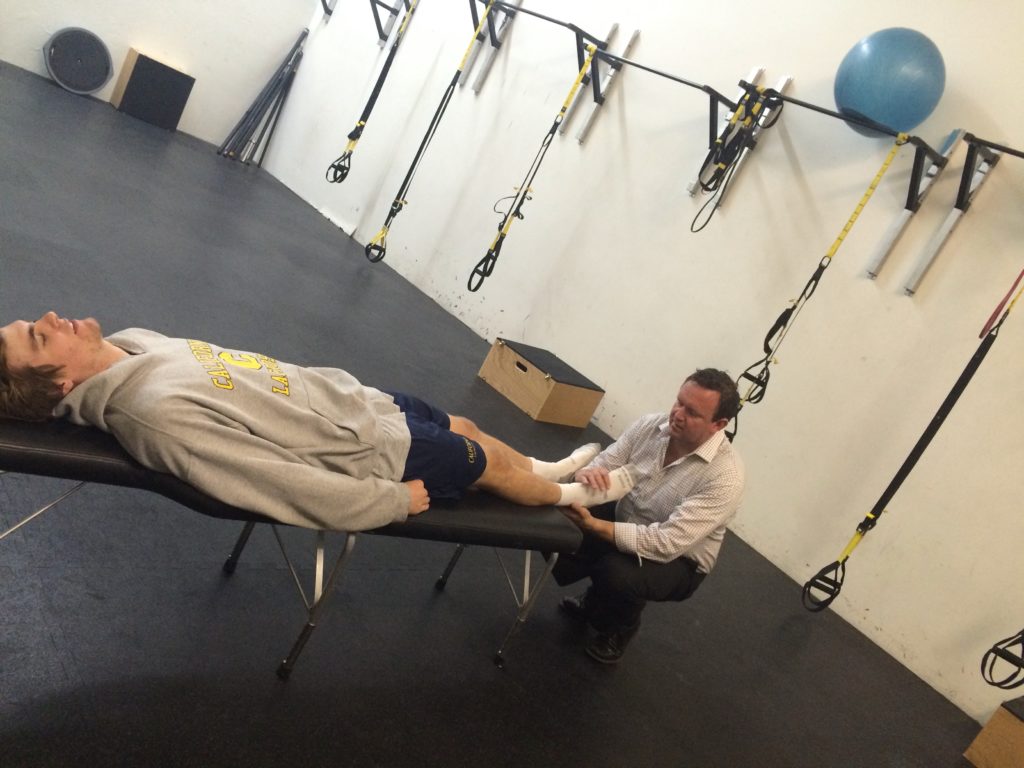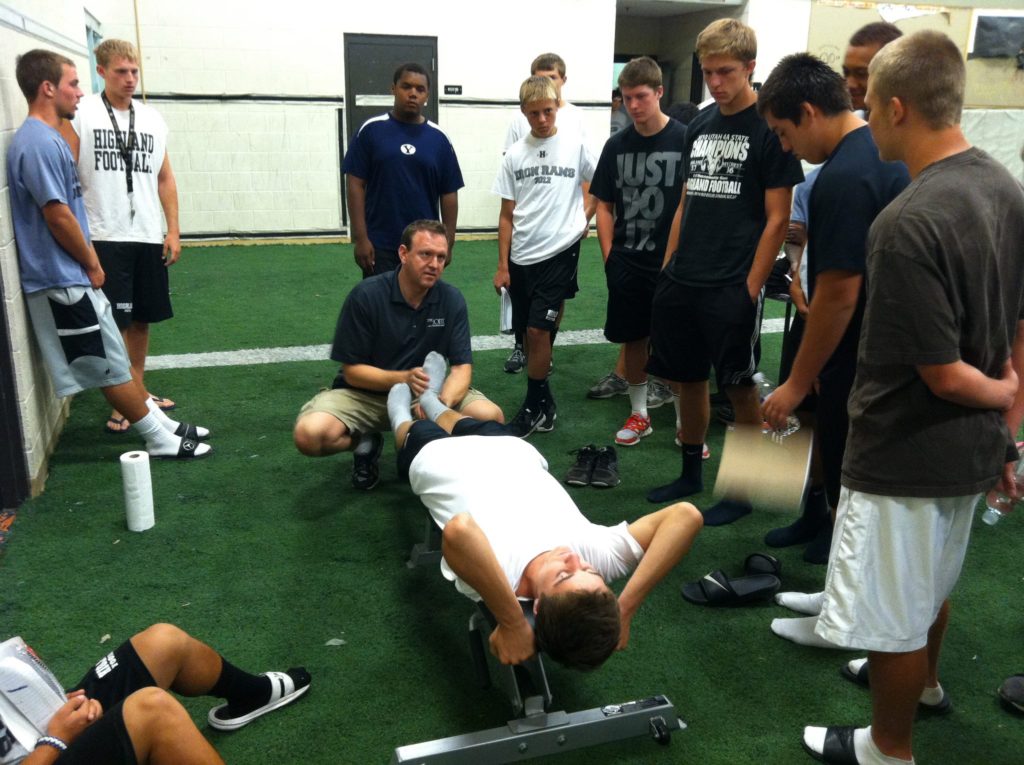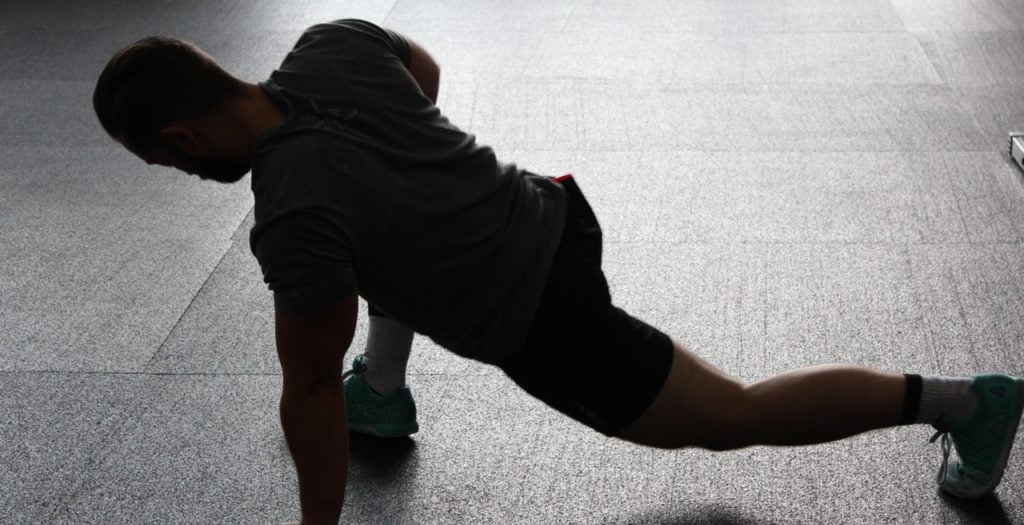Hey there, fitness enthusiasts and health-conscious folks! Today, we’re going to learn about an interesting topic that may have crossed your mind if you’ve ever visited a chiropractor: exercise after chiropractic adjustment. Generally speaking, it is okay to exercise after an adjustment with your chiropractor. However, there are some factors to take into consideration. We’ll explore why it’s beneficial and how to do it safely. Ultimately making the most out of your chiropractic care while staying active and healthy.
The Benefits of Exercise Post-Adjustment
- Enhancing the effects of chiropractic care: You might be wondering, “Why should I exercise after a chiropractic adjustment?” Well, doing so can actually help reinforce the benefits of your treatment. By strengthening muscles and improving flexibility, you can support your spine and joints. This may help you avoid the need for future adjustments. In fact, a study published in 2005 found that patients who participated in an exercise program after spinal manipulation therapy experienced a greater reduction in pain and disability compared to those who didn’t exercise. Pretty cool, right?
- Promoting overall health and well-being: We all know that exercise is super important for maintaining our overall health and well-being. It improves cardiovascular fitness, increases muscle strength, and enhances flexibility. Plus, exercise has been shown to help reduce stress, anxiety, and depression. So, by staying active after a chiropractic adjustment, you’re not only maximizing the benefits of your treatment but also taking care of your mind and body as a whole.
- Supporting post-adjustment recovery: Sometimes, after a chiropractic adjustment, you might feel a little sore or uncomfortable. No worries! Exercise can actually help you feel better by promoting blood flow, which delivers nutrients and oxygen to the affected areas. Gentle stretching and low-impact exercises can also help reduce stiffness and keep your joints flexible.
Importance of Doing It Safely
- Listening to your chiropractor’s advice: Your chiropractor is your go-to person when it comes to figuring out when and how to start exercising after an adjustment. They’ll consider things like your specific condition, the severity of your symptoms, and your overall health when giving you guidance. Make sure to follow their recommendations. Also, don’t hesitate to ask questions if you’re unsure about any part of your post-adjustment exercise plan.
- Gradually reintroducing exercise: It’s super important to ease back into exercise after a chiropractic adjustment. Start with low-impact activities like walking or swimming, and then slowly increase the intensity as your body gets used to the changes. Hold off on high-impact or strenuous exercises. This is especially important for those that involve twisting or bending the spine, until your chiropractor gives you the green light.
- Paying attention to your body’s signals: As you start exercising again after your adjustment, it’s crucial to listen to your body. If you feel pain or discomfort during or after a workout, it might be a sign that you’re pushing too hard or doing something that isn’t quite right for your current condition. If this happens, talk to your chiropractor for advice and consider tweaking your exercise routine.
A Simple Exercise After An Adjustment to Help Ease You Back
In the video above I demonstrate using a kickball to activate and coordinate muscle control of your neck. I show the neck’s full range of motion. This is an excellent technique to improve neck range of motion by guiding a gentle stretch through the neck muscles, guided by the ball’s rolling surface. Give it a try, and compare the feeling to a regular neck stretch. With this technique, you can mobilize your neck muscles through their range of motion. Simultaneously, this stimulates them with a constant isotonic tension through the muscles’ shortened and lengthened position.
Ultimately, It’s best to listen to your chiropractor and get custom tailored exercise plan. Try to seek a chiropractor that promotes rehabilitative exercises, for better outcomes. Follow their guidelines, and, generally, it will be safe for you to perform them.
What If Exercising After My Adjustment Is Painful?
The answer is simply don’t do them. Whether you are under chiropractic care or not, your exercises that you do at the gym should not be more painful than a 2/10 on the pain scale. 0/10 is no pain. 5/10 is noticeable pain that is starting to annoy you and is interfering with your concentration at work. 10/10 is the worst pain you could ever imagine. An easy 2/10 is just about what your own body allows you to do under your own power before your body tells you to not do it any more.
For example, let’s say you are at the gym and you are doing overhead presses. You start to feel a pinch in your shoulders as you go through a painful arc of motion. You should probably stop and let it rest if it is more than a simple muscle burn from activity. If it’s more of a sharp pinch, you could be aggravating it. The same rules applies to your low back.
Pain Guidelines To Remember
- 1/10 – If it’s a mild reminder that you have been injured there before, it is most likely safe to continue with the exercise.
- 2/10 – If it’s almost healed, but not there yet (it can take up to a year). For example, you start returning to a moderately weighted dead-lift that starts to produce pain in your spine. At that point you need to evaluate it with your chiropractor.
- If the pain intensity increases to 3/10 and beyond, you may need to lay off of the exercise a little longer. Work with lighter weights or work with your chiropractor to find a routine that is more injury-appropriate.
Exercising after a chiropractic adjustment is a great idea because it can make the treatment work better, improve your overall health and well-being, and help you recover from the adjustment. To make sure you’re doing it safely, follow your chiropractor’s advice. Remember to ease back into exercise gradually, and pay close attention to how your body feels. By sticking to these guidelines, you’ll be well on your way to enjoying the full benefits of chiropractic care and living an active, healthy lifestyle.
Understanding Chiropractic Adjustments
Next, we’ll jump into the world of chiropractic adjustments. We’ll discuss the goals of chiropractic care and how adjustments affect your musculoskeletal system. So grab a seat (preferably with good back support) and let’s get started!
The Goals of Chiropractic Care
- Relieving pain and discomfort: One of the main goals of chiropractic care is to help you find relief from pain and discomfort. Whether you’re dealing with nagging back pain, a stiff neck, or even headaches, chiropractic adjustments can provide much-needed relief. These adjustments help to realign your spine and joints, which can alleviate pressure on your nerves and reduce inflammation.
- Improving function and mobility: Chiropractic care isn’t just about relieving pain; it’s also about helping you move better! Chiropractors aim to improve the function and mobility of your spine and joints. This can improve your posture, make you more flexible. Additionally it make it easier for you to move around and do daily tasks.
- Supporting overall health and wellness: Did you know that chiropractic care can also support your overall health and wellness? Chiropractic adjustments can help your whole body because they improve the way your spine is aligned and support a healthy nervous system. When your spine is properly aligned, it allows your nervous system to function at its best. This helps to keep you healthy and feeling great.
How Adjustments Impact the Musculoskeletal System
- Restoring proper alignment: So, what happens during a chiropractic adjustment, anyway? Well, during an adjustment, your chiropractor applies controlled force to specific joints in your spine or other areas of your body. This helps to realign the body and can fix problems like subluxations (when the vertebrae are out of place) and joint dysfunctions.
- Reducing stress on the nervous system: When your spine is out of alignment, it can put stress on your nervous system, leading to all sorts of problems. Adjustments from a chiropractor help relieve this stress by correcting misalignments and putting your spine back to work the way it should. This can help to alleviate pain and other symptoms caused by pressure on your nerves.
- Strengthening surrounding muscles and tissues: Chiropractic adjustments can also help to strengthen the muscles and tissues surrounding your spine and joints. By putting things back in the right place and making sure they work right, your muscles can work better and support your skeletal system better. This can lead to better posture, more stability, and a lower chance of getting hurt in the future.
What’s Happening When I Get An Adjustment
When I was going through school and coming up in my career, they always called the popping sound in your back, cavitation. It turns out, that term was not appropriate for what is actually happening. Cavitation happens to a boat’s propellers as they are cutting through San Francisco Bay water very quickly. As the propeller blade chops through the water, bubbles form on the surface of the blade and they quickly collapse. As the bubbles collapse, they cause damage to the surface of the propeller. This is not what happens to the spine or to your knuckles.
The reality of what happens in your neck when it is adjusted is called tribonucleation. As your chiropractor moves your spine into position he is precisely contacting the segment that is not moving as it should. As he adjusts that joint by distracting the surface of the joint, surface tension is released in the synovial fluid. A popping sound happens. It’s like if you had two panes of glass, and you had water between the two flat surfaces. You would be able to glide across the surfaces of the glass smoothly with the water as a lubricant. However, if you tried to separate the two panes it would be difficult until you release the surface tension. A pop may happen.
In summary, chiropractic adjustments offer numerous benefits for your musculoskeletal system. By addressing pain and discomfort, improving function and mobility, and supporting overall health and wellness, chiropractic care can help you feel and move better. Now that you have a better understanding of what chiropractic adjustments are all about, let’s get back to our main topic: exercising after an adjustment.
Benefits of Exercising After Adjustment
In this section, we’ll dive deeper into the benefits of exercising after an adjustment, specifically looking at how it can enhance the effects of chiropractic care and promote overall health and well-being. So, let’s jump right in!
Enhancing the effects of chiropractic care
- Strengthening muscles and improving flexibility: One of the key ways exercise can enhance the effects of chiropractic care is by strengthening the muscles and improving flexibility around your spine and joints. When your muscles are strong and flexible, they provide better support for your spine and joints. This makes it easier for your body to maintain proper alignment. This can help you avoid the need for frequent adjustments and improve your overall posture.
- Supporting spinal alignment: After a chiropractic adjustment, it’s important to keep your spine in its newfound, healthy alignment. Exercise can help with this by promoting proper posture and body mechanics. When you exercise regularly, especially when you do things that focus on core strength and stability, you are better able to keep your spine in good shape throughout the day.
- Preventing future injuries: Another awesome benefit of exercising after an adjustment is that it can help prevent future injuries. By strengthening your muscles and improving your flexibility, you’re less likely to experience issues like muscle strains or joint sprains. Plus, regular exercise can help you maintain a healthy weight, which reduces stress on your spine and joints.
Foot And Ankle Adjustments Boost Athletic Performance: A Case Study
Years ago, I volunteered my time for the Berkeley Men’s Lacrosse team. I had a contact with their strength and conditioning coach. Through this contact he offered me the opportunity to treat this fantastic group of athletes. It was a great experience.

Performing foot and ankle adjustment on Berkeley Lacrosse players.
This wasn’t my first time working with athletes of this caliber, though. This opportunity presented itself because of my experience a couple of years before that. About 5 years ago, I volunteered my time to be the team chiropractor for a Salt Lake City football team. I showed up to their team practices once a week. We would evaluate and correct any faults in the football player’s lower extremities during their practice.

Treating high school football players. They are more robust than the college lacrosse players.
We had great feedback during this time from the players. However, the biggest success for me was when the coaches informed me for that the team had an 80% reduction of non-contact injuries.
A 2013 study in the journal Manual Therapy studied the effects of foot manipulation and dynamic standing balance. These researchers studied the balance of 20 healthy volunteers. They lined them all up to have their ankles adjusted, just like I did with those high school and college athletes. The researchers discovered that reach distance is a measure of better balance. Their subjects who got the chiropractic manipulation improved over a control group. In conclusion, they found that manipulation of the foot and ankle is a great addition to proprioceptive exercises and other therapeutic activities.
Promoting Overall Health and Well-Being
- Boosting your mood and mental health: It’s no secret that exercise is great for your mental health. Physical activity on a regular basis has been shown to help lower stress, anxiety, and depression. So, by staying active after your chiropractic adjustment, you’re not only taking care of your spine and joints but also giving your mental health a boost.
- Enhancing cardiovascular fitness: Regular exercise is essential for maintaining a healthy heart and lungs. Activities like brisk walking, swimming, or cycling can improve your cardiovascular fitness and reduce your risk of heart disease (5). By staying active after your chiropractic adjustment, you’re doing your heart a favor and promoting better overall health.
- Improving sleep quality: Did you know that exercise can actually help you sleep better? Yep, it’s true! Research has shown that people who exercise regularly tend to have better sleep quality and feel more refreshed when they wake up. So, by sticking to an exercise routine after your chiropractic adjustment, you might just find yourself catching some better zzz’s.
In conclusion, working out after a chiropractic adjustment has a lot of benefits, from making your care work better to improving your health and well-being as a whole. By staying active and maintaining a healthy lifestyle, you’re setting yourself up for success in your journey toward better spinal health.
Always remember to consult with your chiropractor before beginning a new exercise routine after an adjustment and to listen to your body’s signals as you reintroduce physical activity. With the right guidance and approach, you can reap the full benefits of combining chiropractic care and exercise in your life.
How Long Do I Wait Before I Can Exercise After An Adjustment?
When researchers study tribonucleation in knuckles they find that you can’t re-pop a joint for another 20 minutes. You pop your knuckles. Five minutes later, you can’t pop them. 20 minutes later, you can. (They also discovered that popping your does not, in fact, cause arthritis.)
It is recommended that that, generally speaking, after your chiropractic visit, you should wait about 30 minutes until performing vigorous exercises. In addition, warming up first is highly advised. After about 30 minutes your joints pack into a stable position again and your muscles have time to catch up.
Chiropractic adjustments help relax tight muscles via fast-stretch reflexes. They hit the reset button on your tight muscles. After these muscles relax, the muscle spindle and golgi tendon organs in the muscles send signals back to the spinal cord and cerebellum. This causes them to re-adapt to joint position. Make sure you are giving your body some time to go through this process before you perform any rigorous exercise after an adjustment.
Final Thoughts
While in college I was the seminar auditor for the continuing education department. As a result of that, I was able to attend over 1000 hours of postgraduate classes in the field of automobile and sports injuries, worker’s compensation disability and apportionment, research reviews, various techniques and rehabilitation, neurology, and even a few practice management courses. Being exposed to these classes, gave me a perspective that made me decide that the best policy for myself as a doctor is to be patient centered.
Being patient-centered as a doctor means that the patient’s needs come first. I continually seek out best practices through published research in the field of chiropractic, physical medicine, and physical therapy. When new patients see me, they receive a medical history, an orthopedic and neurological examination, a differential diagnosis, and a treatment plan. These combine traditional chiropractic and our latest knowledge in the field of physical rehabilitation.
I’ve called Sonoma my home ever since then. I practice in SoMa San Francisco because I want to be around the world of tech. As I follow tech and listen to podcasts about tech, I see it all go down in San Francisco. I use to watch Apple events being reported from the Moscone Center. To me, this is where it’s all happening. However, I’m also proud to be able to live in a scenic, rural town where all of my patients love to visit.
- Dr. Todd Lloyd


